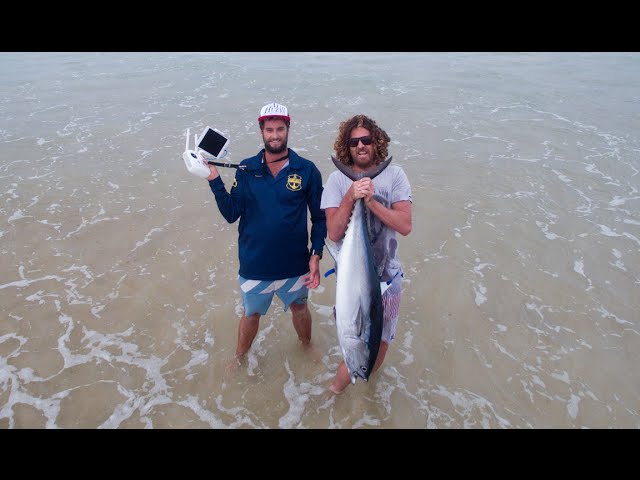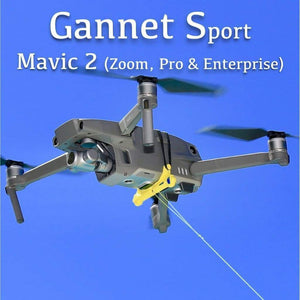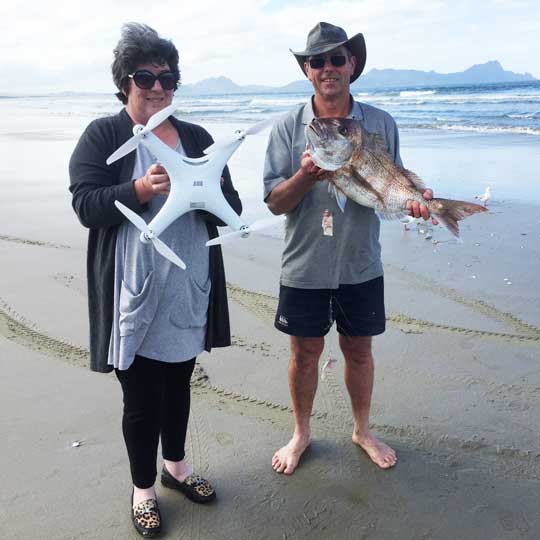
If you are a passionate fisherman, and you live in Australia you can use a drone for an aerial view of your property's waters. The drones can be equipped with a variety of features, including a GPS positioning system, a GPS receiver, a GPS receiver, a GPS payload release, and an angle adjustable camera. There are also fishing lines available that can be used for fishing. They are very stable and secure. One example of such a drone is the SKY RIGGER.
SKY RIGGER drone fishing line
The SKY RIGGER is a flexible fishing line system for drones that allows you to fish from the air with minimal effort. The system features two rotating leg clamps that can attach to various drone models. The release mechanism includes a bayonet connector and a cam-lock arm, which allows you to quickly unlock the line clamps. Unlike other drones, the Sky RIGGER requires no batteries and can accommodate all fishing techniques safely.
The SKY RIGGER comes with an automatic release mechanism that allows you to let go of the line when a fish catches your fly. You can also release the line manually with your hand or rod. This feature is available for all models of the SKY RIGGER. It is highly recommended that you buy a Phantom 3 before buying the new SKY RIGGER. Here are some pros & cons of the new line.
It is equipped with a mechanical payload transfer
The mechanical payload release is a key feature of a drone. Many drones have a release mechanism that allows the angler to easily remove the fishing line. However, some models do not have a release mechanism. Instead, to remove the drone from its fishing line, the user must "yank” it. This can be frustrating, especially for people who aren’t comfortable using their fingers to release the line.

Its payload release function is another important feature. When a fish strikes, the payload must be able release the line from the drone. It is important to practice catch and release fishing before trying this method, as you can't simply pull the fish to shore and release it back into the water. Many people have experienced good results using the DJI Phantom drone. However, the technology is not yet up to the standard of other fishing drones.
It comes with a GPS location system
Rippton is a joint venture of Australia and Holland that specializes exclusively in technology-oriented fishing gear. Its goal is improve anglers' success by creating products that enhance the fishing experience. Rippton's Mobula drone includes a GPS positioning and remote release. The Mobula can hold bait at the surface, provide resistance to kite clips, and be environmentally friendly.
It is light at 3 pounds and can take off for 18 minutes. The GPS system is high-tech and allows for control from as far away as 2,000 miles. It is capable of flying at 1000 meters (or half a kilometer) range and has intelligent flight modes. Its point-of-interest feature allows it to capture high quality images of its surroundings. The camera's high resolution allows for great views of fish.
It includes a failsafe safety feature
The Aerokontiki fisherman drone comes with a failsafe feature: it monitors the battery level and releases the fishing line when needed. In the event of a failure of the battery, it will return to dry ground so that it can continue its mission. It operates with industrial-grade flightcontrollers, and it can work anywhere without requiring calibration. You can use this drone even in very difficult water conditions.

FAQ
Can my drone be flown indoors?
Yes, your drone can be flown indoors. Your home must be free of hazards and obstacles. You should not fly near windows, doors or heating vents.
What are the rules of operation when using drones?
Registering your drone with FAA is required. The registration process requires you to provide information about your device, such as its weight, dimensions, battery capacity, operating frequency, and battery life. The FAA will issue you an identification number.
Are drones allowed to be used at public events
If you observe the rules, then you can fly a drone wherever you want. If you intend to fly your drone at a public event, such as a parade or festival, you will need permission from the organizers.
Statistics
- Research and Markets predict a growth rate of 51.1% over the next five years. (thedroneu.com)
- With the top 10% making over $100/h and the bottom 10% making as low as $10/h. (dronesgator.com)
- According to ZipRecruiter, the minimum hourly wage of drone pilots is $20. (thedroneu.com)
External Links
How To
How to Fly Drones With Beginners
A drone is a remotely-controlled aircraft that is used for aerial photography and surveillance. Drone technology has been around since World War II. However, commercial use began in 2010 when DJI released their Phantom series of quadcopters. There have been many drones made since then. These range from beginner-friendly drones like Parrot AR Drone 2.0 to more advanced multi-rotor craft like DJI Mavic Pro.
There are many options for flying a drone.
-
Remote control – This is when you attach a device to your hand that allows you to control the drone's flight path. There are two types of controllers available: joysticks and on/off switches.
-
Manual Control – This method lets users remotely control the drone by using a smartphone app. You will need to keep track of where the drone is going and follow the directions from the app.
-
Autonomous Flight: This means that the drone will take care of all the piloting. The drone is able to fly autonomously, without the need for human intervention. For the autonomous flight to occur, the drone must have a built-in camera and sensors capable of capturing images and data.
-
Triggered Flying - This method works in the same way as manual control. However, the pilot has to manually set up a route for the drone and it follows that route until reaching the endpoint. Once the programmed route is completed, the drone lands automatically and returns back to the base.
-
Landing Gear - Some drones come equipped with landing gear that allows them to land safely if they lose power or run out of battery during flight.
-
Goggles – Pilots often wear goggles while flying to keep themselves safe from any debris.
-
Camera - Some drones can be equipped with cameras which enable you to capture photos from the sky.
-
Obstacles. Some drones can have obstacle avoidance technology that stops them from hitting obstacles.
-
Speed – Some drones can reach speeds in excess of 40 mph.
-
Battery Life - Most drones can last between 20 minutes to 3 hours, depending on how much power you're using.
-
Range - Depending on the model, some drones can travel up to 30 miles away.
-
Power source - Not all drones can use an external power source. Others can run on internal batteries.
-
Weight - Some drones are lighter than others, while some models can weigh as much as 4 pounds.
-
Size - From small drones that can be carried in the palm of one's hand to larger drones that weigh over 50 pounds, drones come in a variety of sizes.
-
Price - From high-end models that cost thousands of dollars to low-cost options that start at $100, all drones fall under a certain price category.